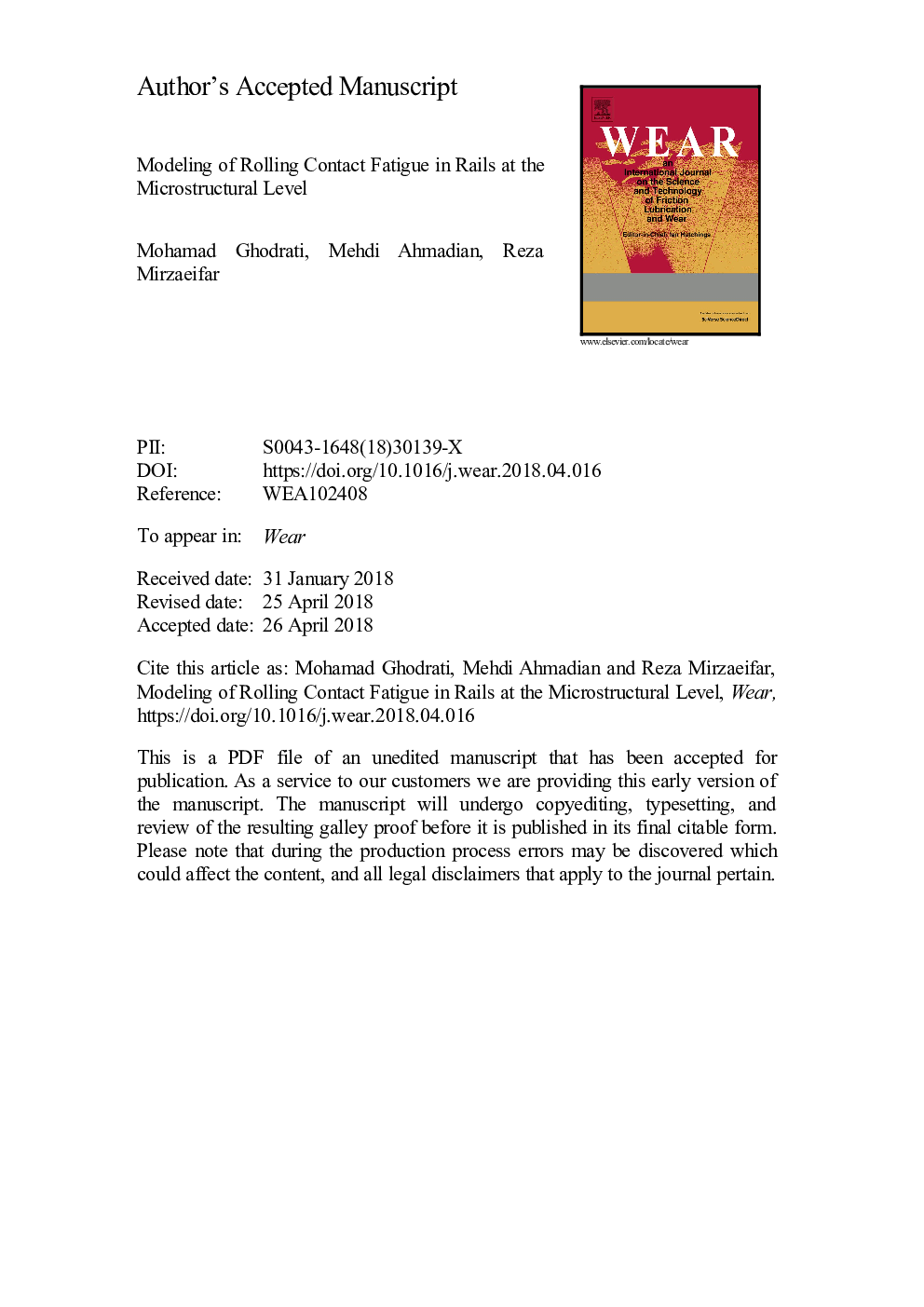| کد مقاله | کد نشریه | سال انتشار | مقاله انگلیسی | نسخه تمام متن |
|---|---|---|---|---|
| 7003874 | 1454937 | 2018 | 32 صفحه PDF | دانلود رایگان |
عنوان انگلیسی مقاله ISI
Modeling of rolling contact fatigue in rails at the microstructural level
ترجمه فارسی عنوان
مدل سازی خستگی تماس نورد در ریل در سطح میکرو سازه
دانلود مقاله + سفارش ترجمه
دانلود مقاله ISI انگلیسی
رایگان برای ایرانیان
کلمات کلیدی
خستگی تماس نورد، ریز ساختار، خسارت، عناصر انعطاف پذیر، تریبولوژی ریلدو، مدل سازی عنصر محدود
موضوعات مرتبط
مهندسی و علوم پایه
مهندسی شیمی
شیمی کلوئیدی و سطحی
چکیده انگلیسی
A micromechanical-based finite element framework is developed to investigate the rolling contact fatigue (RCF) in rails. The microstructure of a representative part of the rail in contact with the wheel during wheel passage is modeled using Voronoi tessellation algorithm. The geometry explicitly represents microstructural grain and grain interface features that represent actual microstructure of rail steel. The grain interface is modeled using cohesive elements. For higher computational efficiency, moving Hertzian load is applied to the rail surface instead of moving the wheel explicitly on top of the rail. The jump-in-cycles approach is employed to efficiently simulate a large number of loading cycles, while the material degradation at the grain interface is represented by an accurate damage evolution law. Additionally, the model is used to evaluate the effects of temperature change, traction coefficient, and grain size on initiation and progression of RCF. The results indicate that colder temperatures increase the progression of RCF, while warmer temperatures do not have any significant effects. Large traction forces at the wheel-rail interface significantly accelerate RCF growth, mainly through migration of subsurface micro-cracks to the surface of the rail. The surface cracks grow into larger ones that lead to loss of rail material. Controlling the grain size can have a positive effect on both the initiation and migration of sub-surface cracks. Changing yield strength of material with the Hall-Petch relation, the model evaluates the effect of refining the grain size. The results indicate that smaller grains can improve RCF properties of the rail. The effect of maximum contact pressure on RCF is studied, and the results show a power relation between maximum contact pressure and RCF life. Also several case studies are simulated and compared with the experimental observations. The simulation results are in close agreement with the experimental observations for the crack pattern and crack depth.
ناشر
Database: Elsevier - ScienceDirect (ساینس دایرکت)
Journal: Wear - Volumes 406â407, 15 July 2018, Pages 205-217
Journal: Wear - Volumes 406â407, 15 July 2018, Pages 205-217
نویسندگان
Mohamad Ghodrati, Mehdi Ahmadian, Reza Mirzaeifar,
